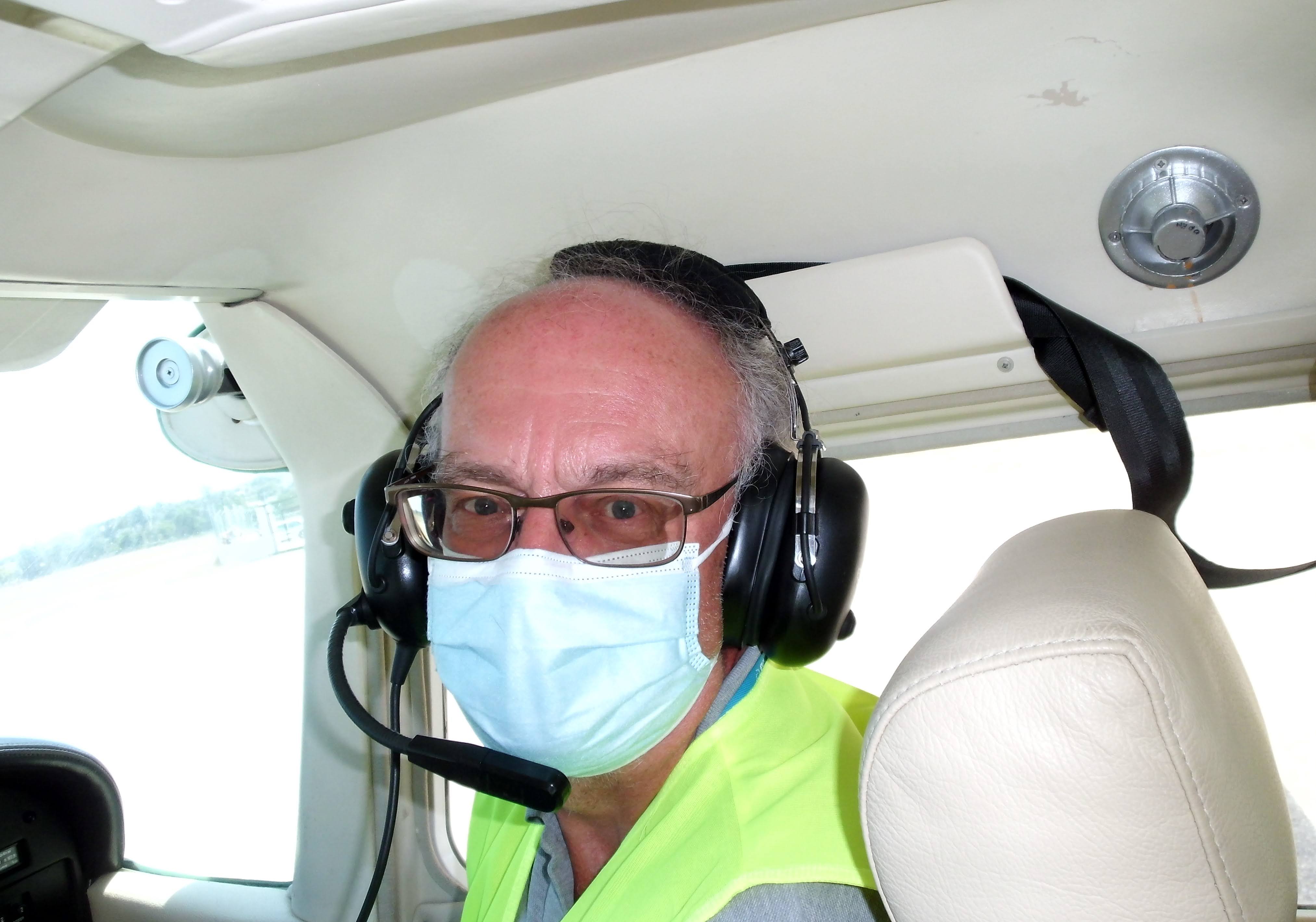Aviator
-
Harvey , Arthur Vere
Sqn-Ldr Arthur Vere Harvey CBE, Baron Harvey of Prestbury 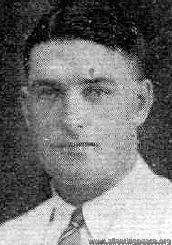 1937
1937b. 31 Jan 1906
'Adviser to the Southern Air Forces in China' in 1937
In June 1938, the Bystander reported that "The first of the Auxiliary Squadrons to undertake co operation with the Army is No. 615, which was formed under Squadron Leader A. V. Harvey at Kenley in June of last year.
Rapid progress has been made during the first twelve months. The Squadron is equipped with nine Hawker Hectors and, in addition, there are two "Harts" and four Avro "Tutors" for training new officers as they join."
He was a British Conservative politician who served as an MP for 26 years.
d. 5 Apr 1994
-
Hattersley, Arthur Patrick Kilvington
Flt-Lt Arthur Patrick Kilvington Hattersley 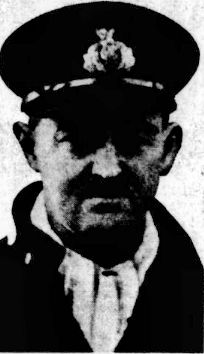 Daily News (London) - Friday 20 November 1936
Daily News (London) - Friday 20 November 1936RAF from Feb 1918
"RECORD FLIGHT FROM FRANCE A record flight from Lille (France) London was made last night by British Continental Airways when an air liner their regular dally service completed the 160 miles' Journey In one hour. The machine was piloted by Chief Pilot Captain A. P. K. Hattersley and carried passengers and luggage. Captain Hattersley reported visibility to quite exceptional, and said that the evening light the coast England could be clearly seen before leaving the French side." Yorkshire Post and Leeds Intelligencer - Wednesday 20 May 1936
d. 19 Nov 1936 in British Airways (ex-KLM) Fokker F12 G-AEOT, which crashed near Gatwick Airport - "The pilot, Flt Lt A.P.K. Hattersley, was very experienced and had about 5,000 hours logged - he had, however, only done 2 hours in a Fokker F12 prior to the accident."
"Captain Arthur Patrick Kilvington Hattersley was 36 years old and had been flying since the age of 17. He was a flight lieutenant in the R.A.F. during the war. In 1923 he joined the South African Air Force and returned to England in 1926, becoming an R.A.F. instructor. Hattersley became one of the chief pilots of British Continental Airways, which later merged into British Airways. "
-
Hawker, Harry George
Mr Harry George Hawker MBE, AFC 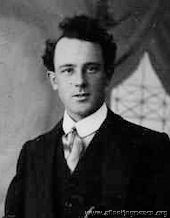
in 1912, aged 23
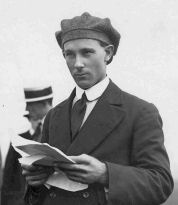
b. 22 Jan 1889 in Victoria, Australia; son of a blacksmith, and the co-founder of Hawker Aircraft.
A very early flier - RAeC Certificate No 297, in 1912. The following year, he made 5 flights 'on and off water' in a Sopwith-designed seaplane, which meant that they won the £500 offered by the RAeC.
An even bigger prize in 1913 was the £5,000 offered by the Daily Mail for a race for seaplanes, to cover nearly 1600 miles in 72 hours round the coast of Britain. Harry (with fellow Australian H Kauper as mechanic) started off in a Sopwith from Southampton on August 16th. They got as far as Yarmouth but Harry felt unwell (later they worked out that he had sunstroke) and had to return to Southampton for another try, which started on the 26th.
Unfortunately, having made good progress on their first day, nearing Dublin on the second his foot slipped off the rudder bar, the aeroplane fell "like a stone" and dumped them in the Irish Sea, whence they had to be rescued by the Coastguard; the machine was wrecked. Harry was unhurt, Mr Kauper injured. The Daily Mail gave them a consolation prize of £1,000 "in recognition of their plucky attempt".
A few weeks later, he wrote off another Sopwith at Brooklands, badly injuring his back. The following year he did it again in almost the same place, this time failing to control a loop and spinning down into some trees. When spectators reached the scene, Harry was standing by the smashed aeroplane, "bewildered but unhurt".
Nothing daunted, he broke the British altitude record by climbing to 18,393ft in 1915, although it took him over an hour and he" suffered greatly from the cold"; he then broke the world record by getting to 24,408ft on 26 April 1916 (which started people wondering about perhaps flying to the top of Everest).
Next, in 1919, the Daily Mail offered £10,000 for a flight across the Atlantic. Harry, with Commander Kenneth Mackenzie Grieve R.N. as navigator, started from Newfoundland on 18th May but the aeroplane had problems with its radiator and they had to put down in the sea after about 800 miles. It was several days before the news emerged that they had been rescued by the small steamer 'Mary', and taken to Thurso. The Nation, having feared the worst, was mightily relieved, and gave them a terrific welcome; "No event since the Armistice has so stirred the popular imagination". Harry and Kenneth got the Air Froce Cross each (despite the fact that Harry wasn't actually in the Air Force), and £2,500 each as a not-inconsiderable consolation prize (although they had agreed to split the original prize 70:30). Before they could try again (on June 15th to be precise), Alcock and Brown had done it (just), been knighted by Mr Churchill and walked off with the cheque for £10k. Damn!
His luck finally ran out when he was killed in the Nieuport Goshawk G-EASK which crashed at Hendon 12 July 1921 while he was preparing for that year's Aerial Derby. The aeroplane burst into flames and spun in; Harry leapt from (or fell out of) the plane and was found some distance from its remains, "quite dead".
-
Healy, Lewin Edward Alton
Flt-Lt Lewin Edward Alton Healy RAF Cranwell, 1922. Twice mentioned in dispatches.
-
Helmore, William
Sqn-Ldr (Air Commodore) William Helmore RAeC Certificate 9698 (1931)
-
Hemming, Harold
Maj Harold Hemming AFC 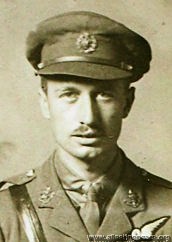
photo: 1916, when a Lieut in the Worcestershire Regiment, aged 23
Director (with Alan Butler as Chairman) of the 'Aircraft Operating Company'. In 1925, they were air surveying in British Guiana.
In 1923, he flew Alan Butler's DH37 'Sylvia' in the King's Cup, coming 5th (as had Alan himself, the year before), and then borrowed it again in 1925, coming 3rd.
Unfortunately, while he was making a test flight in 1927 in the DH37 (now re-engined and called 'Lois') the aircraft hit a scoring board and crashed. The passenger was killed and Hemming lost an eye and sustained other injuries.
-
Hemsworth, Godfrey Ellard
Godfrey Ellard Hemsworth 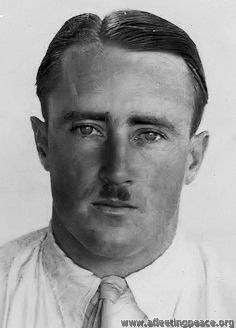
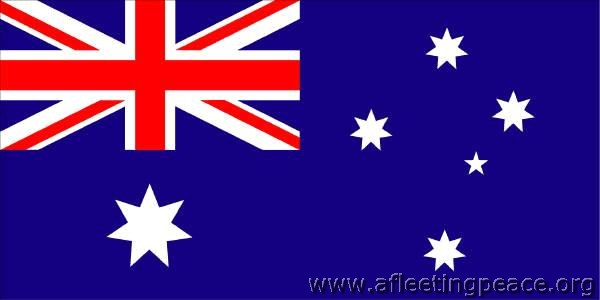
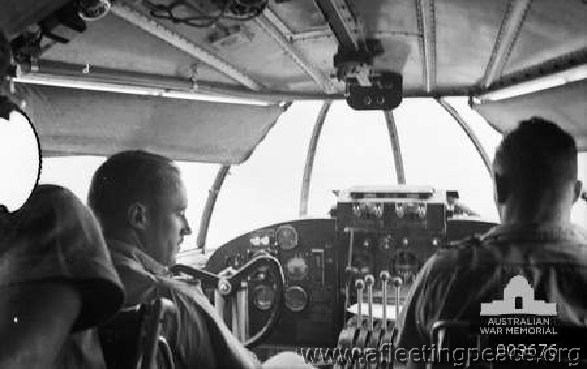
Seen here on the left, in 1940
Godfrey's signature:

Godfrey (‘Goff’) Hemsworth and ‘battling’ Ray Parer piloted a second-hand Fairey Fox biplane, G-ACXO, in the 1934 England to Australia Air Race. Although they almost immediately had engine trouble (over the English Channel, in fact) and didn’t complete the course in the time allowed to qualify for any of the prizes, they battled on... and on; eventually, they took 117 days to get to Melbourne. But they got there!After the race, Godfrey joined the RAAF and was killed in the Battle of the Coral Sea, flying a Catalina.
"'Goff' had all the guts in the world." They say.
[family insights were kindly provided by G E Hemsworth, Godfrey's nephew].
Family
Godfrey was born in Sydney, Australia on the 2nd of January, 1910. He had three brothers - John, Neville and Hugh - and two sisters, Alice and Anne.His grandfather (John) had owned and captained a number of vessels (including the Neville & Costa Rica Packet), but during the 1890’s depression most of the fortune had been lost.
His father, Captain Hemsworth – also (confusingly for us) called Godfrey Ellard – had been instrumental in the exploration of New Guinea during the latter part of the previous century; in 1885, the Maitland Mercury & Hunter River General Advertiser reported that:
“Godfrey Hemsworth, age 23, of Brisbane, filled the post of nautical sub-leader, and in the event of the death, or serious illness, of the leader he would take his position, except that he would not lead the party on land. He held a master's Certificate, and had been navigating officer of some of the finest steamers, was a member of the Meteorological Society of London, and was qualified to undertake any kind of marine surveying.”
Theodore F Bevan, of the RGSA, wrote about that expedition and the subsequent gold rush in his book ‘Toil, travel and discovery in British New Guinea’.
However, by 1906 Captain Hemsworth was listed as a 'pearler' in the electoral roll for Broome, Coolgardie, living in Weld Street. (A ‘pearler’ (leaving aside its use as an Australian slang word meaning ‘excellent’ or ‘good-looking’!) is someone that ‘dives for, or trades in, pearls’). There was obviously enough money for him to purchase some pearling luggers (in the end he owned 12 including the Blanche –named after his niece - and some others named after his sisters). He left Broome in 1908 and returned to Sydney.
It was while he was in Western Australia that he met Mabel; they married in Feb 1907. She was 'about 30 years younger than her husband' (who would have been about 45 at the time!)
Godfrey's nephew G E Hemsworth told me "Interestingly, I have a journal that a great aunt wrote about her life and that of her parents and siblings. It traces their lives from 1825 to the 1930’s, but not once does she mention Mabel, so obviously the family were not happy!"
Captain Hemsworth died in 1923. His estate amounted to about £12,000, which he left ‘for the benefit of his widow and six children’. Using average earnings, this would be worth over £2 million today.
Before the Race
Godfrey took his A and B pilots’ licences with the local branch of the Australian Aero Club in 1931, and then flew for Parer's New Guinea company. Not without incident, however:
“Mr- Mario Coucoulis, secretary to the Greek Consul-General in Sydney, left Mascot aerodrome on Saturday on a flight to Perth. His idea is to gain experience for a projected flight to Greece later in the year. Mr. Coucoulis and Pilot G. E. Hemsworth, who were flying from Sydney to Perth, made a forced landing near Wagga on Monday. The plane was damaged, but neither occupant was hurt. They intend to proceed when repairs are effected.”
The Queenslander, Thursday 23 July 1931
During the 1930s,when Papua New Guinea was governed by Australia, a quite extraordinary air-based operation was mounted in Bulolo to support the gold mining industry– so much so that New Guinea ‘led the world in commercial aviation’ at the time.
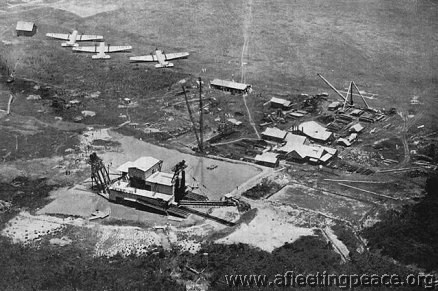
Bulolo during the gold rush days
In 1933 Godfrey and his brother John were living at Wychwood, Condamin Street, Balgowlah, New South Wales (although both were listed as having ‘No Occupation’). Their mother, Mabel, lived nearby in White Street.
Parer and Hemsworth arrived in England from New Guinea on August 6, 1934, breaking the journey at Singapore. The Fairey Fox in which they competed in the Air Race was bought from the Hon. Mrs. Victor Bruce, and was modified at Hanworth by W. S. Shackleton, who ‘cleaned it up very prettily’.
After the Race
In September 1936, there is a curious entry in the Sydney Morning Herald:“AMBITION TO FLY: Youth Granted Fees from Estate
Application was made in Equity yesterday by Neville Hemsworth, a son of the late Captain Godfrey Hemsworth, retired master mariner, formerly of Campbelltown, for an order for the payment of fees from his father's estate for the purpose of applicant's training as an aviator.
The application was made through the applicant's mother, the testator's widow, a resident of Manly. She said that her son Neville had just left school. He was aged 19, and wished to qualify as an aviator to obtain a pilot's "A" licence, and "B" commercial licence, and wireless and navigation licences. One of his brothers, Godfrey, was a pilot for New Guinea Airways at a salary of £900 a year.
Mr. Justice Nicholas made an order authorising the trustee to pay out of corpus £475 to meet the fees necessary for the purpose indicated, and in addition, £25 for books, instruments, etc.”
"... It’s an interesting story. My grandfather’s will gave the boys their money at 25, the girls were to receive a monthly payment. As Neville wanted to learn to fly he had to have access to the funds earlier and Mabel successfully argued that sufficient funds should be released to enable Neville to obtain his pilots license. When Godfrey died in 1923, the oldest child (John) was 15 and the youngest Hugh only a few months old. Mabel had many fine qualities and was certainly a loving mother however she was not good with money and of course six years later in 1929 the start of another depression and a second fortune lost. This indicates how important it was for Neville to obtain a good job and learning to fly would help achieve that."
…although Godfrey's working for ‘New Guinea Airways’ may not have been as glamorous as it sounds…
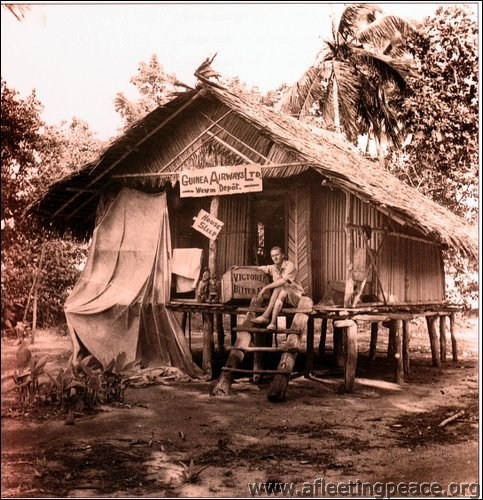
RAAF
Godfrey was a First Officer with Qantas from May 1938 until the outbreak of war fifteen months later. On his application form for the RAAF, he listed his ‘service aircraft’ experience as ‘Seagull Mk 1, Empire Boats, and Catalina’. By then, he had 5,500 hours experience – 4,500 as pilot in charge.The Australian government requisitioned two `C` class flying boats and their crews from Qantas, and two Seagull Mk5 amphibians, to form 11 Squadron RAAF. The boats were converted for war use in 5 days and on 25 September left for active service operations in the north of Australia; Godfrey, who had been accepted as a Pilot Officer a month before, was one of the pilots. During the next couple of years, he was promoted to Flying Officer, then Flight Lieutenant and finally Squadron Leader in 20 Squadron, based at Port Moresby, in April 1942.
His RAAF report, written in 1941, describes him as ‘of temperate habits’ and praised his ‘zeal and energy in performance of duties’, but he only scored average marks for his ‘personality, force of character and leadership’. G.W Pearce, the examiner, concluded he was:
“A keen and efficient officer. A good pilot and carries out his flying operations in a competent manner. Lacks the right service outlook. Is inclined to be argumentative with his seniors and has the ‘Qantas’ outlook in that he will not take the slightest risk in flying in case it will jeopardize his position with Qantas Airways after the war. He, however, commands the respect of his crew, and he is well liked by the officers”.
20 Squadron RAAF had an extraordinary history, which is perhaps best appreciated by reading this article reproduced in several newspapers of the time. It was written in April 1943, a year after Godfrey was killed:
"But I think those RAAF Catalina squadrons have done a greater job in this war than anyone else". This tribute from a fighter pilot of famous Squadron 75 is probably the best way in which to begin this story. Before Squadron 75 fought off Japanese bombers and Zeros over Moresby, and attacked them at Lae in March and April last year, the Catalina boys had bombed them hard at Rabaul.
Catalinas were few in number then, but they struck so daringly that the Japs must have believed our Moresby strength was greater and more varied than it was. At any rate, they paused in their southward rush and whenever they came over Moresby in those January days, they flew high and cautiously.
Today Australia's Catalina flying boat squadrons have won world-wide fame. In craft built specially for reconnaissance they have become a formidable striking unit. They have harassed the Jap from Truk to Tulagi. They have flown more than 2,000,000 miles in all weather over the Coral Sea and the Pacific to blow up in the dead of night his ammunition dumps and stores, destroy his grounded aircraft, tear gaping holes in his airstrips, sink his ships, plot his movements.
One lone Catalina actually tried to stop the Japanese task squadron in its descent upon Rabaul. Flt-Lt "Bob" Thompson, on patrol on January 21, spotted the convoy. He signaled that he would attack if it didn't hold back. The Japs continued full steam ahead. Thompson attacked. The Japs shot him down. The crew are believed prisoners in Japan.
That was the Catalinas' first loss in battle. Thompson's impudent daring is the key to the cool courage that has characterized the work of the squadrons ever since. Sometimes they have made newspaper headlines. But mostly they have plodded ahead quietly and doggedly. Theirs is not the swift dramatic flash of the fighter plane, told in short dynamic sentences. Theirs is the hard 18 to 22-hour mission to pin-pointed targets, their reward high flames, explosions, and billowing smoke.
But you can get drama only secondhand from the Catalina boys. They will tell you stories about others, never about themselves.
When I was there, the Cats had just returned from their big "bash" at Ballale in the Solomons Buin-Faisi area. As at other places, they had destroyed ammunition and fuel dumps, stores, and grounded planes, and young Sq-Ldr Stokes was credited with "the biggest fire since Makambo." Today in the mess they sing to the tune of 'The Man on the Flying Trapeze":
'They head her for home and the skipper retires
To dream of the headlines next day the "the fires
Were visible 90 miles distant" - the liars.
The Cat boats are flying tonight.'
That's the other side of the Catalina boys. Light hearted over their parodies in the mess - deadly serious in their job.
Pioneer Pilots
Beginnings of the Catalina squadrons go back to Empire Fying boat days. With German raiders in the Pacific, reconnaissance on a much wider scale was essential. While orders for Catalinas were placed in America, Qantas flying boats were taken over by the Commonwealth.
The names of Sims, Gurney, Purton, and Hemsworth, all Qantas pilots, began to dot the islands of New Guinea and the Solomons. They plotted fuel 'hide-outs" and secret operational bases. Sims is back with Qantas now. Gurney was killed in an American bomber returning from Rabaul (a New Guinea airstrip bears his name); Purton is missing from early Japanese operations in the north-west; Hemsworth was shot down in the Coral Sea battle. Al Norman, second-pilot with Gurney on the first Catalinas, also went in the Coral Sea.
Godfrey Hemsworth's is one of the first names you hear when you visit the Catalinas. It is an indication of a good pilot and a strong character. He could have come home another way from his shadowing of the Japanese Coral Sea invasion fleet, instead, he chose to make an even more thorough job of his search. Enemy floatplanes got him.
They tell this story of Hemsworth in the mess:
"He was on a night raid to Rabaul. That was early in the 'piece.' Second 'dick' was Bill Miller, DFM. They were attacked by five Zeros just as they were making their run. Their port engine was disabled and the old crate was holed in 157 places, including the petrol tank. One Zero was shot down.
"It was a tough spot, but with guns blazing, 'Goff' got away on one engine. They were forced down at Salamaua to get petrol. 'Goff' got her off again, still on one motor, and reached Moresby all out. Flying time home was 15 hours."
" 'Goff' had all the 'guts' in the world." they say.
POSTSCRIPT
In theCoral Sea and Catalina Memorial Museum, Bowen, Queensland, Australia, there is a diorama showing two PBY-5 Catalinas:A24-18, which was shot down on 4th May 1942, with a loss of nine aircrew, was piloted by Godfrey Hemsworth, whose brother Neville, also a WW2 RAAF veteran, dedicated the Museum on 8th May, 1992. The other aircraft is A24-20 shot down on 6th May. Both these aircraft were shadowing the approaching Japanese Fleet. A24-18 is credited with first locating the Fleet, and was subsequently ordered to identify and report back the size and content of the fleet. The plane did so and was not heard from again.
As to what happened then, 'there is no certain answer. We [the family] know he was shot down and that he and his crew were picked up; after that it becomes conjecture but there seem to be three theories:
1) picked up and then either clubbed to death or beheaded;
2) taken by ship to Rabaul and there killed, or
3) taken to Rabaul and transferred to a ship going to Japan that was then sunk by the Americans at some stage.Hugh told me that Godfrey was killed on board the ship which picked him up but there is no actual proof, no records as to what actually happened.'
His mother Mabel received his Air Force Cross from His Excellency the Governor-General, Lord Gowrie, at Admiralty House on the 25th of January 1943. She herself died later the same year, from leukemia, in Manly.
Godfrey's nephew G E Hemsworth told me that "Anne's husband Andrew was a prisoner of the Japanese, he was taken at Singapore. Godfrey's brothers all served in the RAAF: John was too old to fly, but served in the Middle East for three and half years in ciphers and equipment, moving along the coast and setting up airfields and ensuring the plans and men had the equipment with which to fight. He used to take lots of photo’s including German POW’s and Montgomery standing in a jeep etc. Hugh, the youngest, was a pathfinder and flew many missions over Germany. He won a DFC & Bar."
There is a memorial to Godfrey in the Port Moresby War Cemetery, Papua New Guinea (Memorial No 23791928).
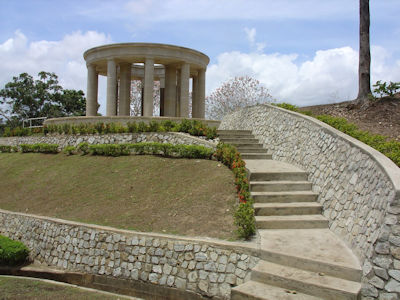 CWGC
CWGCNo. 20 Squadron was established at Port Moresby on 1 August 1941 for a general reconnaissance role. The Squadron conducted long range patrols in conjunction with No. 11 Squadron until the outbreak of war in the Pacific. It then commenced anti-submarine patrols and bombing raids against Japanese bases. As the Japanese advanced into the South West Pacific the Squadron was also responsible for evacuating white civilians from areas threatened by invasion. While the Squadron moved to Bowen, Queensland in May 1942 in response to the increasing frequency of Japanese raids on Port Moresby it continued to conduct reconnaissance, anti-submarine and occasional bombing operations over the waters around New Guinea.
http://en.wikipedia.org/wiki/No._20_Squadron_RAAF
The serial numbers may be wrong:
A24-20 386 RCAF VA735/
RAF V9735Delivered 10/03/42. 20 Sqn 4/4/42. Crashed 06/05/42, off Misima Island in the Coral Sea. 9 Crew Died. Crew; SQNLDR Geoff Hemsworth (Pilot), SGT Jack Coulter (2nd Pilot), FLGOFF Leo Mclintock (Nav), CPL Col Marsden (1st Engineer), LAC Ken Arnott (2nd Engineer), LAC Norman Banville (1st Wireless Op), SGT Jack Bandy (2nd Wireless Op), LAC Eric Dorman (Rigger) and LAC Erwin Brown (Armour). A24-18 350 RAF V9702 Delivered by Qantas as VH-AFS 23/10/41. 11 Sqn 30/1/42. 20 Sqn 3/4/42. 11 Sqn. Shot Down 04/05/42 while on a daylight reconnaissance mission the aircraft was shot down south of Bougainville and the crew where taken prisoners by the Japanese. On 4 Nov 42 the crew were taken to Matupi village and then executed. Crew; FLGOFF Allan Leslie Norman 407006 (Pilot), FLGOFF Frederick Arthur Donald Diercks 407708 (2nd Pilot), PLTOFF Francis O’Connell Anderson 403118 (Nav), CPL Alfred Harry Lanagan 6853 (1st Engineer), CPL Alfred Roland Hocking 18005 (2nd Engineer), LAC William Murdoch Parker 20343 (1st Wireless Op), LAC Vernon Holloway Hardwick 17635 (2nd Wireless Op), LAC John Joseph Burns 19574 (Rigger) and LAC Ernest John McDonald 10253 (Armour).
Godfrey was posted to No 11 Squadron 25/9/39 then to 20 Squadron 1/8/41 -
Henderson, George Lockhart Piercey
Lt-Col George Lockhart Piercey Henderson 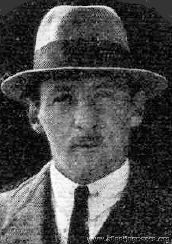 1920, aged 32
1920, aged 32b. 15 Apr 1888 in Simla, India, a 'law student' in 1915
RFC in WWI; commanded 66 Squadron in 1917.
In 1919, he offered flights to the general public in an Avro at Hounslow Aerodrome: £1 a head. There was enormous interest; queues of 50 or more were patiently waiting and the aeroplane could hardly get up and down fast enough. Consequently, he was described as the 'best-known of the competitors' in that year's Aerial Derby.
He and a Lieut Herrstrom then opened a flying school in Sweden - "ideal conditions for winter flying", they said.
Later, President of the Federation of Pilots; in 1924, he and Frank Barnard were in talks with Lord Thompson about the dispute over terms and conditions for the pilots of the newly-formed Imperial Airways.
He was still competing in 1927, coming third in the Poole Handicap for owner-pilots.
He got some flak in 1928 when he opened a service from Cape Town and Johannesburg using Junkers tri-motor aeroplanes but, as he pointed out, it was the cheapest option.
He was killed 21 July 1930 in Junkers F.13ge G-AAZK belonging to the Walcot Air Line, which crashed near Gravesend, Kent. His co-pilot and the four passengers also died. The inquiry concluded that the aeroplane had broken up in flight due to 'buffetting', but Junkers produced convincing evidence of pilot error, suggesting that he pulled out of an inadvertent dive too violently.
His ashes were scattered from an aeroplane over Croydon.
His book 'A Complete Course of Practical Flying' was published almost the same day.
-
Henshaw, Alexander Adolphus Dumfries
Mr Alexander Adolphus Dumfries Henshaw 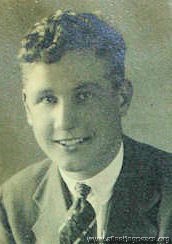 1932, aged 20
1932, aged 20b. 7th November, 1912.
The extraordinary Mr Spitfire. Leant to fly in (of all places) Skegness. "After 25 hours solo bought a Comper Swift and in the 1933 King's Cup Race won the Siddley Trophy with it." In 1936, still the youngest competitor in the race.
d. 24th February, 2007
-
Heslam, Denis George Westgarth
Capt Denis George Westgarth Heslam 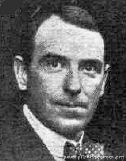 1920
1920b. 29 Jun 1885
Test Pilot for Avro.
d. Dec 1972 in Aldershot
-
Hewett, James Duff
James Duff Hewett 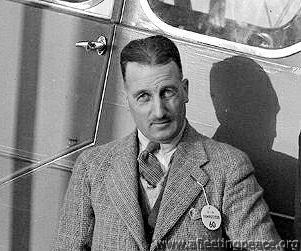 1934
1934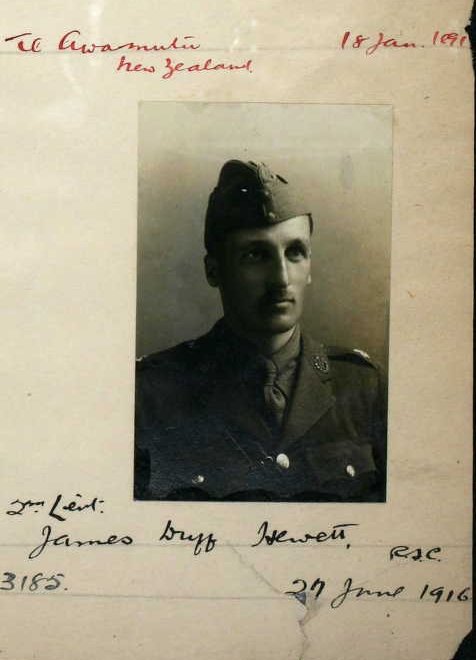 1916
1916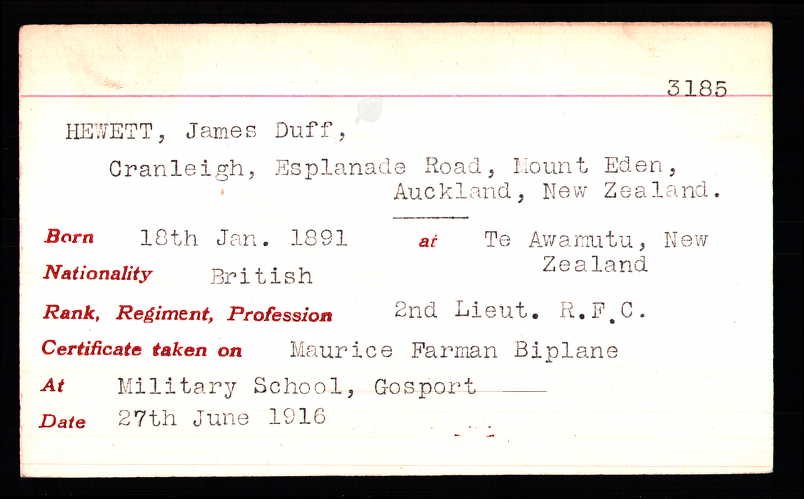
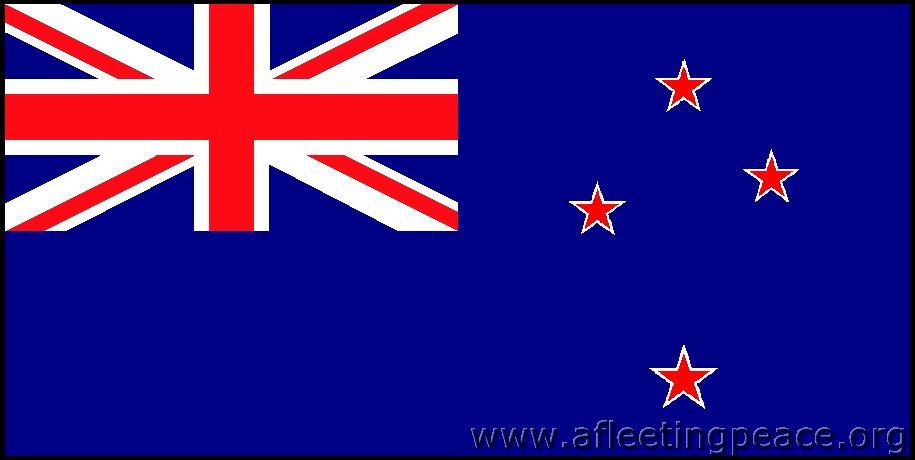
James Duff Hewett was born on January 18, 1891, in a near-Auckland district which is spelt Kihikihi and pronounced " Kee-kee " to avoid confusion with kai kai. which is Maori for "food." The R.Ae.C. gave him its certificate in June, 1916, two months after his transfer into the R.F.C. Whilst serving in France with Nos. 4 and 23 Squadrons he was awarded the C. de G. Post-war he put in a year with No. 20 Squadron on the Indian North-West Frontier. Thence, with rank of Sqd. Ldr., back to New Zealand. One of Hewett's brother officers in No. 23 was " 2nd Lieut. C. K. Smith," nowadays better known as Air Com. Sir Charles Kingsford Smith.
In 1924 Hewett joined the N.Z.A.F., of which he is still a member. Since 1927, when he bought one of the first Moths " seen in the Dominion (a " Gipsy I "), his connection with aviation has been mainly commercial, as managing director of Falcon Airways, Ltd., Auckland, which has its private aerodrome at Oraki. Hewett has flown some 4,000 hr. Now in his 44th year, he is perhaps senior to every competitor in the race.
HEWETT, a war-bird, is in command of No 1 Squadron, New Zealand Territorial Air Force. He is one of the Dominion's most successful commercial pilots and has flown 26 types of 'planes.
(ABCs guide, 1934)
Died 27th October 1955 in Kerikeri, aged 64
-
Hill, C N
Lieut Cmdr C N Hill, R.N. 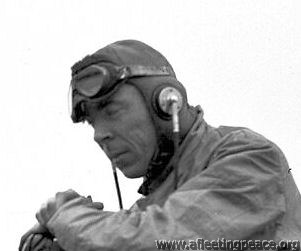
A Fleet Air Arm pilot; partnered Gyril G Davies in the Fairey IIIF in the MacRobertson Race.
AHSA_1985_AH_Vol_24_No_1-2 says:
"The pair who had flown together in the Fleet Air Arm became known as “Burglar Bill and the Missionary”. Davies earned the title of the “missionary” no doubt because since leaving the R.A.F. some time previously he had been running a shelter for destitutes in the West End of London.
-
Hilton, Edward Goodwin
Wing-Cdr Edward Goodwin Hilton AFC 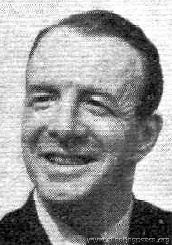 1937, aged 42
1937, aged 42b. 1895 in Surrey
RFC in WWI
AFC in 1920 for 'gallantry and distinguished services' in 70 Sqn, Egypt
A pilot at Martlesham. Made an attempt at the South Africa - England record in 1936 (flying 'Miss Wolseley', an Airspeed Envoy), but was delayed in Athens and abandoned the attempt.
m. 1926 Joyce Elizabeth [Martin]
Entered the 1937 Kings Cup Race, I'm afraid, "largely out of curiosity''. He was thrown out of the aircraft in very bumpy conditions near Scarborough; his passenger (the owner of the aircraft) Wing-Cmdr Percy Sherren, a native of Crapaud, Prince Edward Island, was also killed in the subsequent crash.
-
Hinchliffe, Walter George Raymond
Mr Walter George Raymond 'Hinch' Hinchliffe 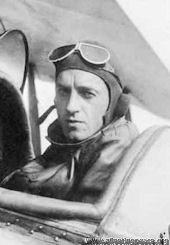 1916
1916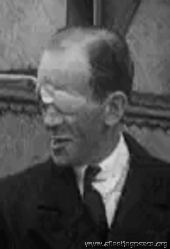 in 1927
in 1927b. 10, or 11 Jun 1893, or 1894
WWI fighter pilot (7 victories, the last of which cost him his left eye); he then became a well-known pilot for Daimler Air Express, which formed part of Imperial Airways in April 1924.
On 18 December 1924 he flew G-EBBX, a D.H.34 single-engine airliner, from Croydon to Amsterdam but, after setting off on the return journey, the engine oil pressure started fluctuating alarmingly and he turned back; the engine was overhauled, and he tried again, with the same result. Again, the engine was overhauled and tested thoroughly and they finally got back to Croydon on Christmas Eve, although the engine was still running rather roughly.
The next person to fly the aeroplane was David Stewart; the aeroplane took off from Croydon later the same day and crashed within a few minutes, killing him and his 7 passengers. It was the first fatal crash suffered by Imperial Airways, and it led to the first Public Enquiry into a civil aircraft accident in the UK.
Hinch carried on as one of Imperial Airways' senior pilots; two years later, for example, he flew Geoffrey and Mrs de Havilland, plus another man and four other women, to India, to inaugurate Imperial Airways' Egypt-India Empire service.
September 1925: "AIR PILOT'S RECORDS. COVERED HALF A MILLION MILES. Two world's records for length of time spent in the air and distance flown were created by Mr W. R. Hinchcliffe, the Imperial Airways pilot, who, when he arrived at the London Air Station, piloting a Napier D.H. express from Amsterdam, on Saturday completed 6000 hours' flying.
Mr Hinchcliffe has been flying continually for more than nine years, and, taking an average speed for the numerous different types of airplanes he has flown, has covered more than half a million miles by air. In flying this distance he has spent the equivalent of 250 entire days, or more than eight months, in the air."
October 1926: "AEROPLANE BLOWN BACKWARDS CAUGHT BY STRONG WIND AND CARRIED FOR MILE. Captain W. G. R Hiinchliffe, the Imperial Airways pilot, had the unique experience of travelling backwards through the air yesterday while testing one of the big Rolls-Royce air liners at Croydon Aerodrome. Ascending to a height of 2000 feet, he encountered a head wind so strong that his machine was blown steadily backwards for a distance of over a mile."
He came 4th in the King's Cup in July 1927.
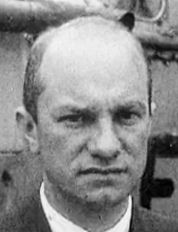 Then in August 1927 he was asked by wealthy American businessman Charles A Levine to try an east-west trans-Atlantic flight in the Bellanca monoplane NX237 'Miss Columbia'.
Then in August 1927 he was asked by wealthy American businessman Charles A Levine to try an east-west trans-Atlantic flight in the Bellanca monoplane NX237 'Miss Columbia'.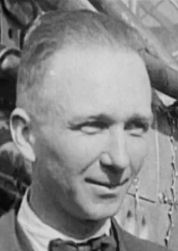 Clarence Chamberlin had set the world long-distance record flying from New York to (near) Berlin in this aeroplane, with Levine as passenger; indeed, they had missed being the very first 'long' trans-Atlantic flight by only a few days.
Clarence Chamberlin had set the world long-distance record flying from New York to (near) Berlin in this aeroplane, with Levine as passenger; indeed, they had missed being the very first 'long' trans-Atlantic flight by only a few days.However, this idea was abandoned after Leslie Hamilton, Lt-Col Minchin and Princess Lowenstein-Wertheim disappeared in their Fokker FVIIa G-EBTQ when they tried the same thing. Instead, they decided to try to break the long-distance record by flying to India, but only got as far as Vienna when oil pressure fluctuation (again!) and bad weather forced them to land.
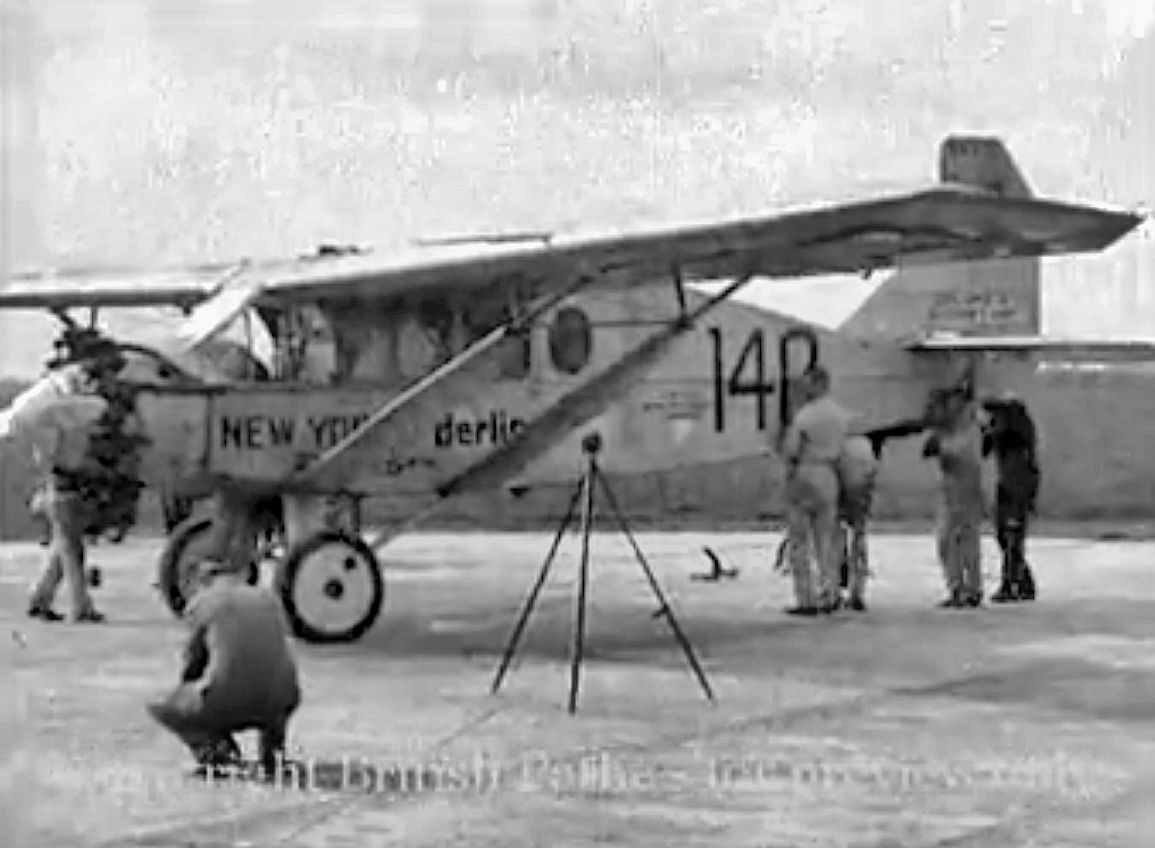
There is some footage of the preparations at Cranwell for this flight, (and of the Fokker 'St Raphael' in which Hamilton, Minchin and Princess L-W lost their lives) here: https://www.britishpathe.com/video/old-flying-stories/query/Levine
So (Hinch having already agreed a month's leave from Imperial Airways) they then took a leisurely flight round Italy, including an audience with the Pope on 3 October; the Pope gave Mr Levine the apostolic benediction, "blessing his future enterprises". The next day, however, intending to drop a present for Signor Mussolini's new baby boy, they had to make a forced landing in a vineyard, doing serious damage to the aeroplane but luckily not themselves.
The Bellanca was repaired but later destroyed in a hangar fire; another one, painted to look like it, was in the Virginia Aviation Museum.
'Hinch' disappeared with Elsie Mackay in 1928 trying to cross the Atlantic from east to west.
Elsie's parents, Lord and Lady Inchcape, generously put Elsie's £521,101 13s 4d in trust for the nation for about 50 years, after which time they hoped it "should be used to reduce the National Debt". They also gave Capt Hinchliffe's widow Emilie (sometimes known as Eileen) £10,000, his estate being a rather more modest £32.
-
Hinkler, Herbert John Louis
Sqn Ldr Herbert John Louis Hinkler 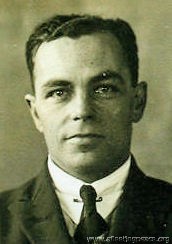
photo: 1927, aged 35
Australian 'Lone Eagle', aviation pioneer, killed in a crash in Italy in 1933
-
Hole, Alan Harold
F/O Alan Harold Hole 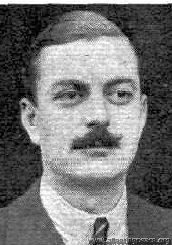 1937
1937Personal pilot to Lindsay Everard MP (after Winifred Spooner), and 'manager of his private aerodrome at Ratcliffe' -
Holmes, Cyril Thomas
Flt Lt Cyril Thomas Holmes 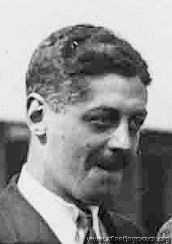 1930
1930An AT&T pilot, then one of the original captains of KLM, then a flying instructor in the Reserve of Air Force Officers (RAFO)
-
Hope, Walter Laurence
Capt Walter Laurence 'Wally' Hope 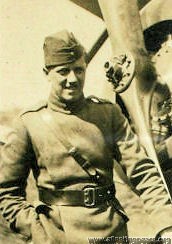 1917, when a 2nd Lieut in the RFC, aged 20
1917, when a 2nd Lieut in the RFC, aged 20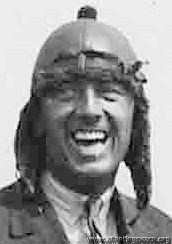 1928, aged 31
1928, aged 31Technical director of Air Freight.
b. 9 Nov 1897 in Walton, Liverpool
Aged 18, and described as a "trick-cyclist", he was summoned in 1915 for committing a breach of the Realms Act by taking a photograph of one of his Majesty's ships at Barrow; he pleaded not guilty, admitted that he was carrying a camera, and was fined £5.
A close friend of Bert Hinkler, he made an extensive search over the Alps at his own expense when Bert went missing on his fatal flight in 1934, but then sued the Daily Mirror when they published their hair-raising account of his exploits, "Captain Hope's Ordeal in the Alps". He said there was "not one word of truth in it."
m. 1920 Marjory [Stone]
Three-time winner of the King's Cup Race (1927, 1928 and 1932)
In the 1926 King's Cup race, "he had to descend at Oxford while racing for home in the last lap with a small “airlock" in his petrol pipe, which effectually put his tiny Moth machine out of the running. He landed in a small field - so small that he found it impossible take off again when his minor trouble had been rectified without pushing his plane through three fields to a broader stretch of country, where he could rise. By this time it was so late that he decided that would abandon the race and go on at his leisure to Hendon.
Interviewed at his home in Hendon yesterday, Mr. Hope said: “The only thing that I am really disappointed about is that I feel sure that if this trifling mishap had not occurred I should most certainly have won. For three laps I was racing neck and neck with Captain Broad, with an aggregate speed equal to his - between 90 and 91 m.p.h." Daily Herald
At the end of the 1928 race, "Thinking all was over he proceeded to loop and stunt before landing, and having landed switched on his well known winning smile. Suddenly there was a terrific hooting, and Sir Francis McClean in his white Rolls-Royce came tearing across to tell Hope he had not crossed the finishing line... Within 30 seconds Hope was in the air again, discovered the finishing line, landed, and again switched on the winning smile fortissimo." C G Grey
Entered for the MacRobertson Race in 1934 (No 24) but didn't take part in the end.
m. 1954 Hilda L [Stone or Hunt]
d. Oct 1979 - Isle of Wight
-
Hordern, Edmund Gwynn
Mr Edmund Gwynn Hordern 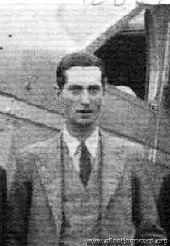
1935
Test pilot for Heston Aircraft Company.
In 1937 he formed Hordern-Richmond Aircraft Ltd at Denham, which made propellors; now part of Permali Gloucester Limited.
d. 1993
-
Horsey, Herbert John
Capt Herbert John 'Horse' Horsey 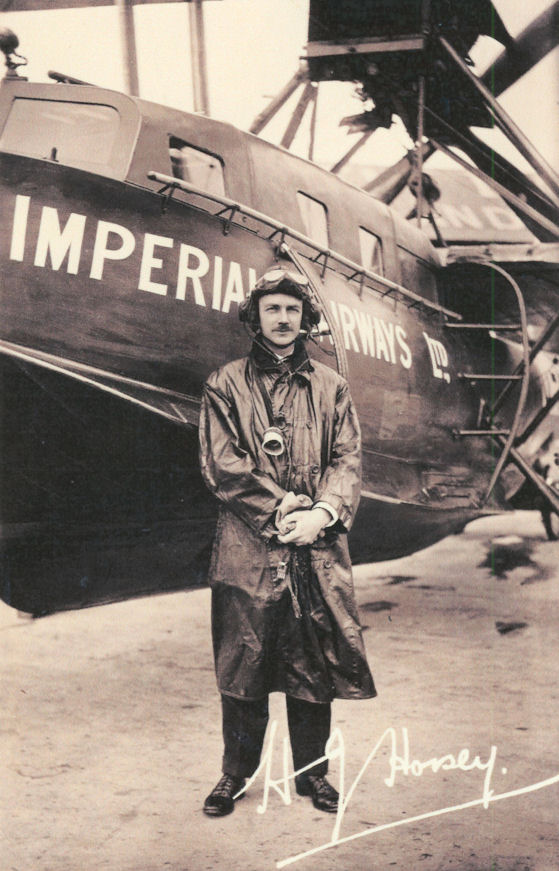
One of the original 16 pilots of Imperial Airways in 1924
b. Cheshunt, Herts 26 Nov 1899
RNAS and RAF in WWI, then joined Supermarine, followed by British Marine Co. as a flying-boat captain on the route from Southampton to Guernsey. When BMC became part of the newly-formed Imperial Airways in 1924, he was one of their founder-pilots.
In December 1926, he reported seeing a 'Mock Sun': "While approaching Ostend at a height of a thousand feet, shortly after 4 p.m. yesterday Captain H. H. Horsey, Imperial Airways pilot, flying a Handley Page Napier air liner from Cologne to London, had the unusual experience seeing two suns in the sky.
The two suns were exact replicas, even to the colouring of the clouds around them. Captain Horsey imagined that was "seeing things," but was reassured when his engineer, who was seated beside him, said that he also could see this phenomenon.
The Air Ministry meteorological expert at Croydon Aerodrome, after receiving a report of the pilot's experience, declared the occurrence to be a very rare phenomenon known to meteorologists as a 'mock sun.'"
(Ahem), apparently this expert was referring to a 'parhelion'; "Parhelia occur when the sun or moon shines through a thin cirrus cloud composed of hexagonal ice crystals... (they) most commonly appear during the winter in the middle latitudes."
Here's what they must have seen:

In June 1927, he created a new record for big passenger aeroplanes, by flying from London to Cologne in one hundred and sixty minutes, at an average speed of 130 miles an hour.
Address in 1932: 138 King's Hall Rd, Beckenham, Kent
A flight commander in the ATA in WWII, but died 6th January 1941 after he hit cables and crashed on 2nd January, 2.5 miles NW of Wroughton ferrying a Curtiss Mohawk.
G.P. Olley wrote in his obituary: "An atmosphere of gloom settled over the war-time base of British Overseas Airways Corporation when the tragic news came throught that Captain H. J. Horsey ('Horse' to his friends, and that meant every one) had died suddenly from the injuries he had received in an accident some days before."
Gordon reported that, a few days before, "poor old 'Horse' was concerned that he had broken his clean record - up to then, he had never had a major crash, or harmed a hair of the head of a single passenger."
Herbert is buried in Hatfield Heath, Essex.
Page 9 of 23

